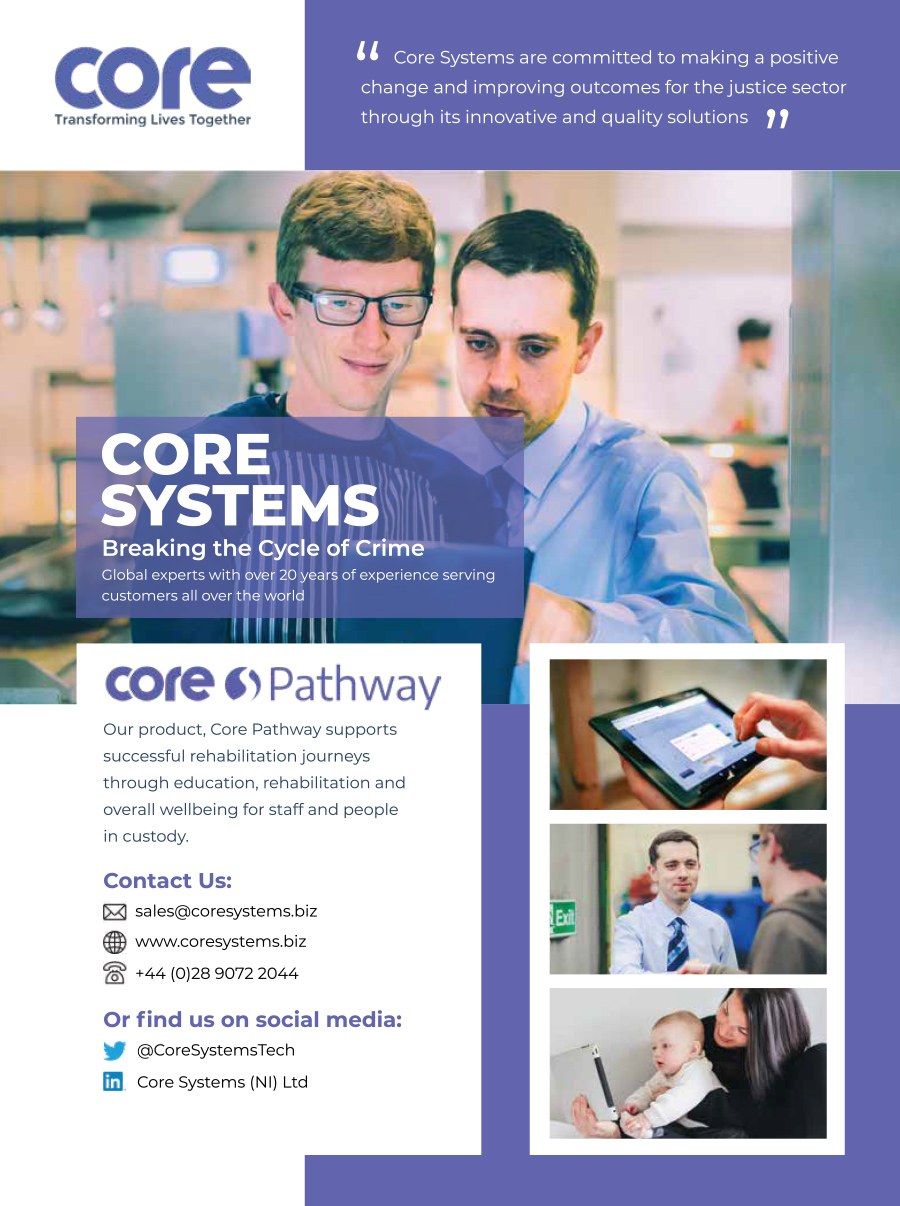Article
Patricia O’Hagan
The coronavirus pandemic was the long-awaited big one, a pandemic that brought societies, economies and governments to their knees.
The challenges presented by the pandemic and the resulting lockdowns over the past couple of years have exposed the fragility and vulnerabilities of mainstream systems and practices across many industries, including the corrections sector.
Responding to the challenges required innovation, agility and collaboration, delivering results that would have been previously unimaginable.
Coming through the pandemic we have had a two-year lesson in change management, including a fast track into the digital age. Empowered by this experience we pose the question “Can digital transformation be a catalyst for operational transformation?”.
The pandemic experience has changed many things in our society. We find ourselves in a new world in which values have been re-assessed, expectations are raised, and there is new momentum for change.
Can we harness this momentum to transform our business operations to be fit for purpose in the context of our changing world? And what role does digital transformation play in driving meaningful operational transformation?
There are many examples of how technology accelerated effective change in response to pandemic-related challenges, both in the prison environment and Community Corrections.
An excellent example of service transformation is the story of how the Ramsey County Community Corrections team, based in Minnesota USA implemented remote supervision as told by Jason Mereness in a series of blogs published on APPA Connect.
In his blogs, Jason tells us that on March 16, 2020, their traditional operating model of supervision through in-person meetings was totally disrupted as their offices had to close in response to social distancing measures.
The need to maintain effective communication and information flow within teams was paramount to business continuity. This applied to officer-to-officer and officer-to-client, communication. In response, they decided to instantly transform their department’s probation practices from traditional in-person meetings to almost exclusively remote supervision and services relying on video and phone communications.
Two years on, Ramsey County has successfully transformed their operating model. They have introduced more contact options for their clients and improved flexibility and working conditions for staff by embedding remote supervision and services practices in their work.
An interesting aspect of this story is the response to the change. Mereness followed up on his team’s digital transformation experience with some research, (supported by Adriana Arce, a colleague from the Research and Evaluation Unit) in which they got feedback from both probation colleagues and service clients.
In both groups, higher levels of satisfaction were reported. Respondents liked the flexibility of remote supervision, they reported improved communications between officers and service clients and as a result, improved relationships.
From the Agency’s perspective, the initiative was successful in that it delivered a breakthrough in service outcomes, with more service users successfully completing their scheduled contact quotas.
They established a more flexible and people-centric service model, reducing barriers to success for service users, reducing stress levels for staff and improvements in work-life balance. A shift towards a more open and collaborative culture was achieved and efficiency benefits included cost reductions (in office space, utilities and related overheads).
This example demonstrates all the characteristics of a successful transformation initiative in which culture, people, tasks and structure are aligned with the strategic objectives and there has been a sustainable shift to a “better place”.
What role did digital transformation play in the overall success of the project? Of course, the compelling need to succeed in the face of the extreme challenges arising from the Covid-19 pandemic must be a key factor in this particular story. However, there are inherent characteristics of digital transformation that serve to drive successful operational transformation initiatives.
Digital transformation blurs traditional boundaries, improves communication and supports collaboration. Information moves up and down the value chain and is accessible to all stakeholders, encouraging a culture of collaboration.
Digital can transform operational processes, empowering employees with increased autonomy in their work, improving motivation and encouraging an environment of employee excellence.
Another key benefit of digital transformation is high-quality user experience, removing frustration and driving user satisfaction for staff and service users. The combined effect of these characteristics can harbour the necessary conditions to support operational transformation.
In conclusion, digital transformation can provide a successful breakthrough if aligned with service transformation strategic goals.
However, the key to success, as in any change management programme, is implementation. A successful implementation requires executive-level commitment, a comprehensive communications strategy and stakeholder engagement throughout.
Operational transformation is necessary for meeting the requirements of a post-pandemic world. Selecting the right expert digital partners, who can demonstrate experience that will support you on your journey, is the key to overcoming these challenges.
Credit to my APPA Technology Committee colleague Jason Mereness, MA, Adult Probation Supervisor for Ramsey County Community Corrections:
Becoming Tele-Ready | Tele-Work in Ramsey County
Assessing Probation tele-supervision efforts – Part Two

Patricia O’Hagan
Patricia O’Hagan is the CEO and co-founder of Core Systems. She brings over 20 years of Prison technology experience and success to the company as she has worked with a wide range of Prison and Correctional Services around the world advising them on digital transformation initiatives. Patricia is an international speaker on Corrections Technology and has authored numerous publications. She served on the Skills for Security Consultation Group for Biometrics and Human Identity, contributing to the development of national occupational standards for the industry. Patricia is currently an active member of the APPA Technology and International Relations committees. She was awarded an MBE in the Queen’s 2013 Royal New Year Honours list for services to the Northern Ireland Economy.




